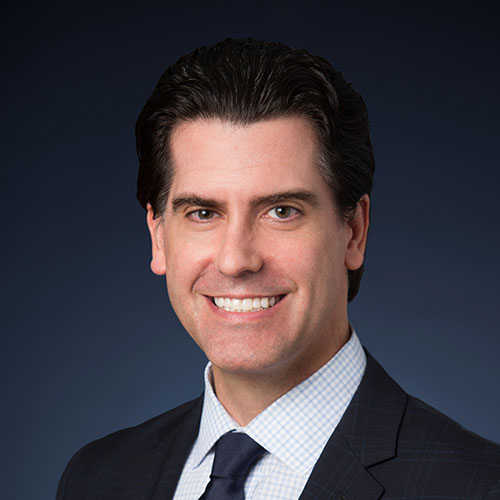Published June 7, 2021 | 5 min read
Key Points
- Gene and cell therapies have the potential to rewrite the body’s response to a range of diseases, from cancers to rare genetic disorders
- A critical component of improving genetic innovations is creating better methods of distribution that are more targeted to specific tissues
- Physicians show strong enthusiasm for the innovative therapies in development to potentially address the unmet need of rare disease patients
- Larger companies in the gene therapy space have the advantage, because they have the experience and capital to coordinate complex development pathways, but smaller companies can gain a leg up by partnering with big firms
Required Disclosures and Disclaimers
Pharma firms are only beginning to explore how far gene and cell therapies can go in treating and curing a myriad of diseases. From cancer to rare genetic disorders, introducing new genetic material into cells or implanting cells themselves are key therapies that have the potential to rewrite the body’s response to disease.
But therapeutic innovation in these areas has many obstacles, including inflammatory and immune responses, directing treatments to the correct tissues and methods of delivery.
Genetic answers for rare genetic diseases
Rare diseases, for example, continue to be a complex therapeutic puzzle. A rare or orphan disease is defined as affecting fewer than 200,000 people in the United States. With more than 7,000 rare diseases identified to date, only 648 rare conditions have drugs under development for them.1
But innovative therapies, including small molecules, antibodies, and gene and cell therapies are offering new hope.
An expert physician from a leading Type 1 Diabetes center in New York City, for example, expressed high excitement for cell therapy approaches in treating this disease. Cadaveric islet beta cell transplants require patients to be on chronic immunosuppressive therapy and donor demand requirements outweigh supply. Recent innovations in stem cell therapy hold the potential to solve this supply constraint by providing an allogeneic source of beta cells.
In sickle cell disease (SCD), physicians from large children hospitals out of Philadelphia and Cincinnati both believe that gene therapy is likely to be used in 10-20% of pediatric patients, given the proof of principle that SCD can be cured or near cured by this treatment. Challenges still remain with preconditioning regimens, but new antibody-based regimens could overcome these. Our experts were also somewhat cautious on current research into the PKR activator class. While they acknowledged remaining unmet medical needs, they were reserving their opinion until they see more results from the drugs in development.
A1AT deficiency, which causes emphysema and liver disease, is an obvious candidate for gene therapy or gene editing. Success has been limited so far, but our medical experts from leading medical school in Los Angeles and New York City, remain hopeful that a functional cure for the disease will be developed, even if a small molecule corrector or RNAi approach comes first.
“I think gene therapy is the future, but if you ask me to estimate where we’re heading now, I do think we will have one intermediate step from replacement therapy to something else before gene therapies will be commonly or easily applicable,” said the West Coast specialist.
"I think gene therapy is the future, but if you ask me to estimate where we’re heading now, I do think we will have one intermediate step from replacement therapy to something else before gene therapies will be commonly or easily applicable."
KOL Speaker, Doctor Day Sessions
Cell therapy treatments for multiple cancers
In oncology, cell therapies are offering new hope for treatments. Our key expert in non-Hodgkins lymphoma, representing a large cancer center in Boston, believes uptake for CAR-T cell therapy will improve over time, although education, referral patterns and patient fitness for the therapy are all impediments right now. The next generation of CAR-T, so called ‘off-the-shelf’ or allogeneic CAR-T, is also likely to expand the market.
“I think the biggest obstacle has been referral patterns. Some community physicians have been unsure about their role in insurance and financial clearance, and concerned about how fit patients need to be for the therapy, and that has led to not enough referrals for CAR-T,” said the doctor.
“But I think education has really improved in reaching community providers and the message that CAR-T cell therapy can be given to patients in their 80s and patients with co-morbidities and that the referring provider is not responsible for financial or medical clearance has really helped with referrals. I have a lot of optimism that referral will improve in time and indeed, already is.”
Multiple myeloma is another cancer that has seen impressive early data around allogeneic CAR-T. Our KOL in this field comes out of another internationally renowned Boston institution and they believe that its off-the-shelf nature makes it ideal for combination treatments to boost response or durability. Natural killer (NK) therapies also hold much potential, but most treatments are still early in development. NK cells are part of the innate immune response, while T-cells, on which CAR-T is based, are part of the adaptive immune system. This gives NK treatments the potential to avoid poor outcomes, such as cytokine release syndrome, the dangerous inflammatory immune response that sometimes occurs with CAR-T.
“We are in the first phase of cell-therapy development,” said the doctor. “Over the next few years these drug products will evolve and become more efficacious.”
"We are in the first phase of cell-therapy development. Over the next few years these drug products will evolve and become more efficacious."
KOL Speaker, Doctor Day Sessions
Commercial challenges: from complexity to lack of expertise
There are still many biological unknowns in gene therapy, as one professor from a leading New York City medical school pointed out. The prevalent distribution system for gene therapies is adenovirus vectors, but using these vectors is complicated by the fact that animal testing isn’t always predictive in humans. There are also potential inflammatory and immune responses in the body to the therapies that must be mitigated for. A critical component of improving genetic innovations is creating better methods of distribution that are more targeted to specific tissues.
For the moment, larger companies in the gene therapy space have the advantage, because they have the experience and the capital to coordinate complex development pathways. This requires aligning analytics, manufacturing and clinical trial design for commercial success, a process that isn’t easy for smaller biotechs and academic spinouts.
However, the doctor suggested that those that want to move rapidly through development could work in partnership with large firms to navigate the regulatory and clinical trial hurdles. This tactic might also help companies who are suffering from the shortage of workers with the right expertise. Not only is there a talent gap in gene therapy itself, but also a lack of expertise in process development and regulatory affairs.
Expertise is also needed in manufacturing for gene and cell therapies. Academic innovation is generating new cell and gene therapy products far more quickly than conventional drugs, but as one leading gene therapy expert consultant pointed out, this doesn’t necessarily require or imply robust CMC (chemistry, manufacturing and control) practices.
Fragile CMC processes are difficult to scale and the FDA is applying rigrous standards to later-stage assets, as the agency has done for advanced biologics such as antibodies in the past. The consultant believes that 5X scaling factors are reasonable and faster scaling can lead to issues in manufacturing processes. He also pointed out that many of the FDA’s CMC regulators started out in the monoclonal antibody industry, and they know the pitfalls with rapid scaling.
As in any new and innovative field of medicine, there are many further discoveries to be made in gene and cell therapies and rare diseases – and many obstacles along the way. However, all of the experts that RBC hosted at the 2021 Doctor Day sessions believe the obstacles are surmountable. Current early stage trials and treatments already in use show promising results. Pharma firms in this area face challenges in complex regulations and development processes, but potential treatments, and even cures, in a wide range of medical specialities are driving progress forward.
For more information, please contact your RBC sales representative.
1. https://service.datamonitorhealthcare.com/hkc/thought-leadership/article228368.ece/BINARY/RD_Whitepaper.pdf

